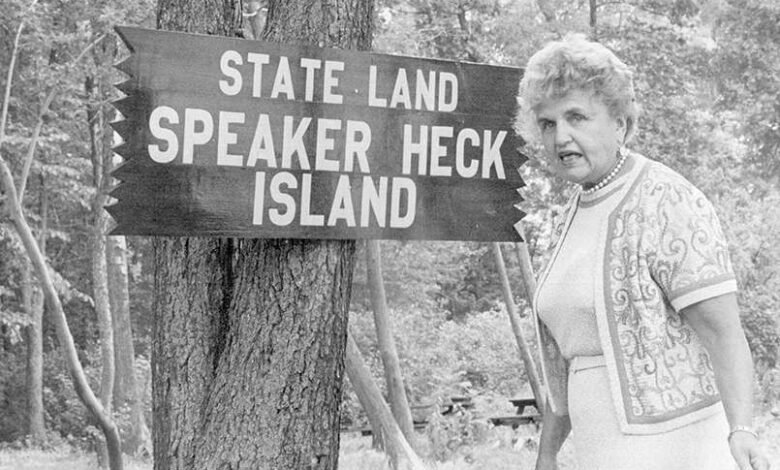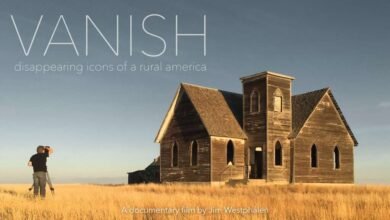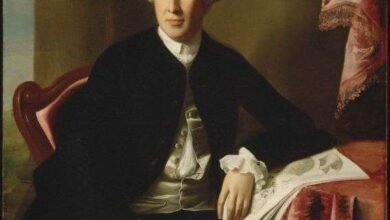How Lake George’s Speaker Heck Island Got Its Name


 Oswald D. “Ozzie” Heck, who owned a camp on the east side of Lake George, was Speaker of the New York State Assembly for 22 years, longer than anyone else. For everyone but the very few who find the state legislature a topic of more than passing interest, though, he is best known as the eponym of the of the state-owned island day use area off Assembly Point, which for most of its history was known as South Island.
Oswald D. “Ozzie” Heck, who owned a camp on the east side of Lake George, was Speaker of the New York State Assembly for 22 years, longer than anyone else. For everyone but the very few who find the state legislature a topic of more than passing interest, though, he is best known as the eponym of the of the state-owned island day use area off Assembly Point, which for most of its history was known as South Island.
South Island was renamed Speaker Heck Island in 1968 at the request of the Lake George Association (LGA), whose leaders at that time were, for the most part, Republican businessmen who had wires to pull in Albany and some influence with the governor, Nelson Rockefeller.
In August of that year, the LGA hosted a dedication ceremony on the island, presided over by Charles H. Tuttle, the onetime U.S. attorney for the Southern District who developed nearby Top of the World as a resort.
According to Tuttle, Heck “ushered into the statue books nearly all the legislation which buttresses with law all that makes Lake George the Queen of American lakes.”
Among those laws: one authorizing the construction of the Million Dollar Beach and another funding the Prospect Mountain Highway.
“He was also responsible for various laws against pollution and against trespassing upon state lands, laws to preserve the water levels and laws to promote safety of navigation,” said Tuttle, as reported in the pages of the August 30, 1968 edition of The Lake George Mirror.
Tuttle noted that Speaker Heck Island was just across the lake from Heck’s camp on Echo Bay, now owned by Brian Rooney and Cecile Callan.
Rooney, whose own family’s camp was not far from the Hecks’, can recall the Speaker’s widow, Beaulah, “arriving in a big boat of a Cadillac, smiling and waving as she passed.”
When he and his wife Cecile purchased the camp, it contained, among other relics, a photo of Heck and Franklin D. Roosevelt taken one summer day on the porch of the house.
Although Heck himself aspired to higher office, he never became governor, let alone president. He was a candidate for the Republican nomination for governor in 1938 and again in 1958, the year that glittering prize was snatched from him by Rockefeller. Once Rockefeller was inaugurated in 1959, Heck did, though, become a loyal ally of the charismatic millionaire.
When Rockefeller proposed to balance his first budget by raising the state’s fuel and cigarette taxes – highly unpopular measures, to say the least – Heck duly lent his support.
According to Heck’s 1959 obituary in The New York Times, “the two worked closely in putting the administration program through the Legislature. One of the Speaker’s toughest assignments was gathering the Republican votes needed to enact the Governor’s tax program.”
Upon Heck’s death at the age of 57 in Schenectady’s Ellis Hospital, Rockefeller (from his ranch in Venezuela, which he was visiting at the time) eulogized him thus: “His passing leaves a void in the Republican Party and in our Legislature which will take years to fill.”
Of course, the Republicans would never produce a Speaker as powerful as Ozzie Heck again in large part because the Supreme Court’s “one man, one vote” rulings, which mandated equal representation in Congress, were applied to legislative bodies in the states and counties in the mid 1960s.
Since 1974, without interruption, the Assembly has been controlled by Democrats – a more or less accurate representation of the relative power of the state’s two major parties, when, that is, political power is gauged by party enrollment.

 Heck was first elected Speaker in 1937, after the Republicans recaptured the Assembly in the elections of 1936.
Heck was first elected Speaker in 1937, after the Republicans recaptured the Assembly in the elections of 1936.
The party’s loss of the lower house in 1934 was something of an accident, in part a consequence of the popularity of President Roosevelt’s New Deal and in part the result of the legendary Robert Moses’ disastrous campaign for governor as a Republican. (“If there was a blunder that could be made, Moses made it,” biographer Robert Caro wrote.)
Upon reflection, it’s amazing the number of years the Republicans did control the Assembly.
According to Politics in the Empire State a 1948 book by Warren Moscow, a reporter who covered the state capitol in the 1930s and 40s for The New York Times, there was nothing accidental about this.
At the state constitutional convention of 1894, Moscow wrote, “a group of smart upstate Republicans who saw that someday New York City would have a majority of the population of the state were determined it should never have a majority of the Legislature.”
With some adjustments, the arrangements put in place in 1894 to prevent downstate Democrats from controlling the legislature remained intact until the mid-1970s.
According to The Schenectady Gazette, Heck’s funeral at Union College’s Memorial Chapel was attended by 1,000 people and four governors.
The son of a newspaper man – his father was editor of the local German-language newspaper – Heck attended Schenectady public schools, Union College and Albany Law School.
Described as “portly” by the New York Times in its obituary of the legislator, the 255 pound Heck nevertheless cut quite a figure on the dance floor, recalls Bolton Summer resident Chris Meigher, whose father was Heck’s personal physician.
The Times also noted that Heck “wielded more power over more years than any other man in New York’s legislative history.” And that, as much as his contributions to the protection of Lake George, explains why a state-owned island is named in honor of Oswald D. “Ozzie” Heck.
A version of this article first appeared on the Lake George Mirror, America’s oldest resort paper, covering Lake George and its surrounding environs. You can subscribe to the Mirror HERE.
Illustrations, from above: Oswald Heck’s widow, Beulah Slocum Heck, photographed at South Island in 1968, shortly after it was renamed in Speaker Heck Island; and Speaker Heck opening the New York State Legislature in 1957.
Source link




